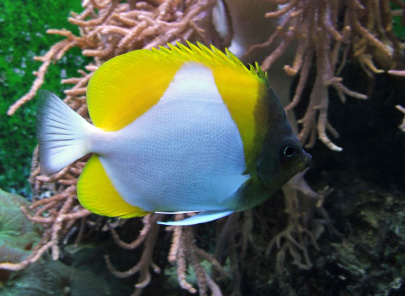Fish Skin - An Odd Way to Learning About Swimming Technique
Fish skin is smooth, even through their scales. Humans want to keep their skin smooth in and out of the water. When swimmers take to the water, they will shave off the hair on their body and ensure that they can better glide through it. This smooth surface without traction is similar to fish scales. As we know, fish swim by bending their bodies and thrusting themselves through the water.
But muscles and bending are only a piece of this natural swimmers mechanics. The fish scales and skin is an important part of the process. Their skin has a dermis that is made of collagen fibers that connect to the tail of the body. This internal system connected to the skin goes along the backbone of the fish and creates a tendon that allows the fish to propel themselves faster through the water.

The scales and the skin of fish are also designed to reduce resistance as they glide through the water. As the fish swims, the skin excretes a slime that helps to boost the efforts of the muscles to ensure that the fish can easily glide through the water.
The fish scales/skin is also designed to provide a better degree of flexibility. This allows for an increased ability to bend and to twist allowing better maneuvering in the water. This is very similar to the flexibility and limberness that swimmers have when they are swimming through the water.
Another thing the fish skin offers is a full body link to ensure that the force of the muscles is able to propel the animal through the water. With the elasticity of the fish skin also in play, it will allow the fish to swim, faster and harder and allow them to escape predators and other dangerous situations. The idea of propelling from behind is how swimmers approach gliding through the water. They use their legs as a way to propel the body through the water and to generate quite a bit of force.
Of course, for ocean life, fish and the swimmers in the water, skin actually has a purpose beyond just helping them to glide through water. The skin is also designed to help keep harmful bacteria and contaniments out of the body as a barrier. Additionally, it helps to protect the internal organs and the system to be able to be in the water without any kind of damage occurring and the result is a safer underwater experience for the species that enter it.
As you can see, there are some similarities between both the fish skin and the skin of humans also. Those similarities can help us to better understand the way we can move underwater and give swimmers the chance to feel closer and more connected to the natural species that spend their days swimming under the bodies of water on the earth.
Today's Daily Swimming Workout:
Warm-Up: 500 working in all 4 strokes in a high technique practice
Kick with swim fins on 6 X 100 alternating backstroke and freestyle by 100
Swim 10 X 50 freestyle on a cruise interval type of pace
Pull with hand paddles: 2 X 300 each as 100 freestyle, 100 breaststroke, 100 freestyle nonstop
3 X 200 each as 50 butterfly, 150 freestyle
4 X 150 each as 100 backstroke, 50 breaststroke
20 X 25 alternating easy freestyle and fast freestyle
Warm-down as 200 non-stop super slow technique choice of strokes
back to the top of fish skin page








